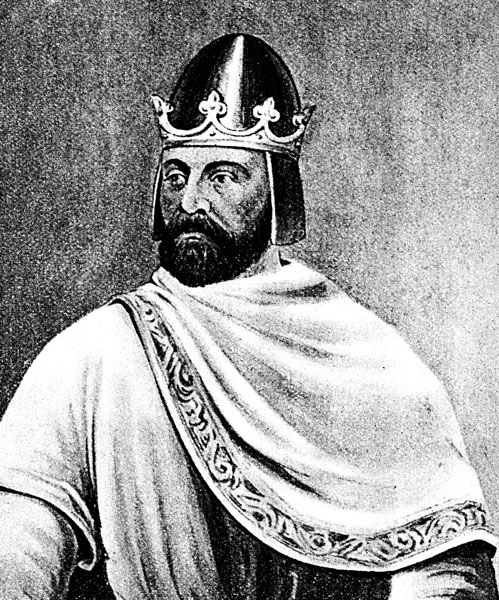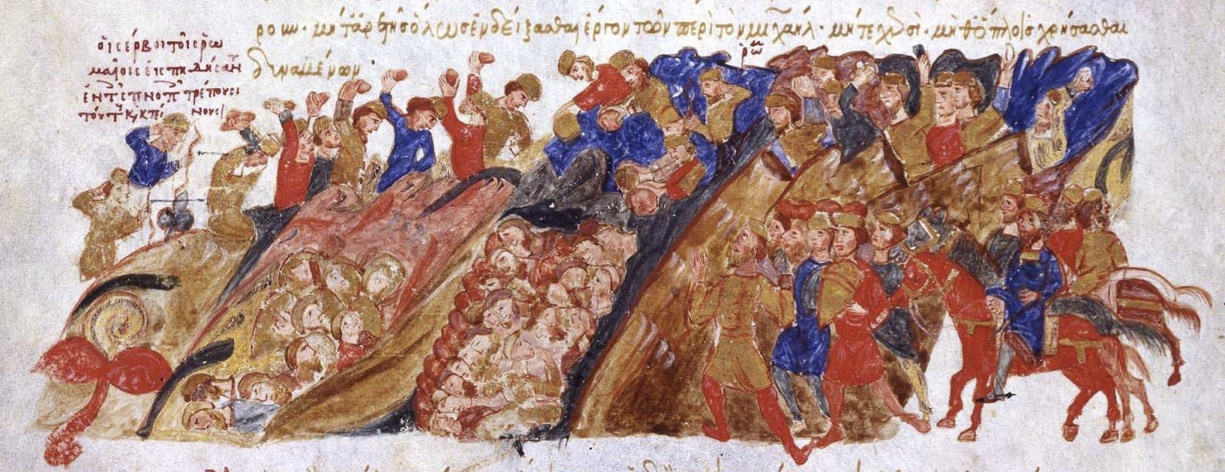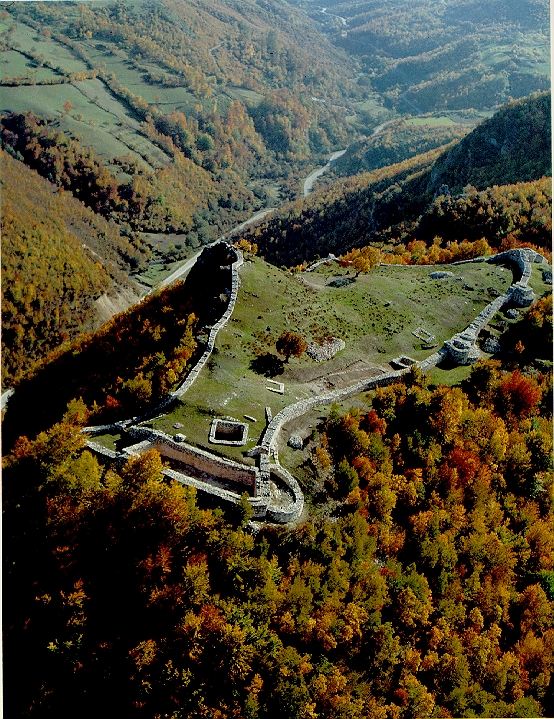|
Dragimir Of Travunia And Zachlumia
Dragimir (Serbian Cyrillic alphabet, Serbian Cyrillic: Драгимир; † 1018) or Dragomir (Драгомир) was Serbian ruler of Travunija, Travunia and Zachlumia, medieval Serbs, Serbian principalities located in present-day regions of Herzegovina and south Dalmatia, from an unknown date before 1000 to 1018.Živković 2006, "Стефан Војислав". The only preserved medieval source that mentions Dragimir is the dubious Chronicle of the Priest of Duklja, specifically its Chapters 34–37. Chapter 34 relates that "King" Chvalimir of the Travunian dynasty, Belojević dynasty divided his domain among his sons, giving Zenta to his first-born Petrislav of Duklja, Petrislav, Travunia and Zachlumia to Dragimir, and Podgoria to the youngest Miroslav.Stephenson 2010,Chronicle of the Priest of Duklja, Chapters 30-35". After Miroslav died without an heir, his land was taken over by Petrislav, who thus ruled all of Duklja (Zenta and Podgoria). However this is contradictory to th ... [...More Info...] [...Related Items...] OR: [Wikipedia] [Google] [Baidu] |
Vojislav Of Duklja
Stefan Vojislav ( sr-cyr, Стефан Војислав; gr, Στέφανος Βοϊσθλάβος; 1034–d. 1043) was the Prince of Duklja from 1040 to 1043. Beginning in the year 1018, he served as a Byzantine governor, until 1034 when he led an unsuccessful revolt that landed him in a prison at Constantinople. He managed to escape and returned home, this time successfully gaining the independence of his statelet and expanding his rule over southern Dalmatia and its hinterland. He is the eponymous founder of the Vojislavljević dynasty. Origin and early life The contemporary Byzantine writers call him either a Serb or a Dukljan (''Βοϊσθλάβος ὁ Διοκλητιανός)'', but do not mention his genealogy, while the ''Chronicle of the Priest of Duklja'', a posterior, more dubious source, calls him a cousin to previous ruler Jovan Vladimir (r. 990–1016).Živković 2006, "Стефан Војислав". Having reached its pinnacle during the long reign of emperor ... [...More Info...] [...Related Items...] OR: [Wikipedia] [Google] [Baidu] |
First Bulgarian Empire
The First Bulgarian Empire ( cu, блъгарьско цѣсарьствиѥ, blagarysko tsesarystviye; bg, Първо българско царство) was a medieval Bulgar- Slavic and later Bulgarian state that existed in Southeastern Europe between the 7th and 11th centuries AD. It was founded in 680–681 after part of the Bulgars, led by Asparuh, moved south to the northeastern Balkans. There they secured Byzantine recognition of their right to settle south of the Danube by defeatingpossibly with the help of local South Slavic tribesthe Byzantine army led by Constantine IV. During the 9th and 10th century, Bulgaria at the height of its power spread from the Danube Bend to the Black Sea and from the Dnieper River to the Adriatic Sea and became an important power in the region competing with the Byzantine Empire. It became the foremost cultural and spiritual centre of south Slavic Europe throughout most of the Middle Ages. As the state solidified its position in the Balka ... [...More Info...] [...Related Items...] OR: [Wikipedia] [Google] [Baidu] |
1018 Deaths
1 (one, unit, unity) is a number representing a single or the only entity. 1 is also a numerical digit and represents a single unit of counting or measurement. For example, a line segment of ''unit length'' is a line segment of length 1. In conventions of sign where zero is considered neither positive nor negative, 1 is the first and smallest positive integer. It is also sometimes considered the first of the infinite sequence of natural numbers, followed by 2, although by other definitions 1 is the second natural number, following 0. The fundamental mathematical property of 1 is to be a multiplicative identity, meaning that any number multiplied by 1 equals the same number. Most if not all properties of 1 can be deduced from this. In advanced mathematics, a multiplicative identity is often denoted 1, even if it is not a number. 1 is by convention not considered a prime number; this was not universally accepted until the mid-20th century. Additionally, 1 is ... [...More Info...] [...Related Items...] OR: [Wikipedia] [Google] [Baidu] |
University Of Michigan Press
The University of Michigan Press is part of Michigan Publishing at the University of Michigan Library. It publishes 170 new titles each year in the humanities and social sciences. Titles from the press have earned numerous awards, including Lambda Literary Awards, the PEN/Faulkner Award, the Joe A. Callaway Award, and the Nautilus Book Award. The press has published works by authors who have been awarded the Pulitzer Prize, the National Humanities Medal and the Nobel Prize in Economics. History From 1858 to 1930, the University of Michigan had no organized entity for its scholarly publications, which were generally conference proceedings or department-specific research. The University Press was established in 1930 under the university's Graduate School, and in 1935, Frank E. Robbins, assistant to university president Alexander G. Ruthven, was appointed as the managing editor of the University Press. He would hold this position until 1954, when Fred D. Wieck was appointed as ... [...More Info...] [...Related Items...] OR: [Wikipedia] [Google] [Baidu] |
Vojislavljević Dynasty
The Vojislavljević ( sr-Cyrl, Војислављевић, pl. Vojislavljevići / Војислављевићи) was a Serbian medieval dynasty, named after ''archon'' Stefan Vojislav, who wrested the polities of Duklja, Travunia, Zahumlje, inner Serbia and Bosnia from the Byzantines in the mid-11th century. His successors, kings Mihailo I Vojislavljević (d. 1081) and Constantine Bodin (d. 1101) expanded and consolidated the state. During the 12th century, the main line of the Vojislavljević family was ousted by their cadet branch, the Vukanović (which became the Nemanjić dynasty), in the late 12th century. History Background Stefan Vojislav Stefan Vojislav, the progenitor of the dynasty, was a nobleman in Byzantine service who had the titles of ''archon'', and ''toparch'' of the Dalmatian ''kastra'' of Zeta and Ston.Kekaumenos, ed Litavrin, 170-2Paul Magdalino, ''Byzantium in the year 1000''p. 124/ref> In 1034 he led an unsuccessful revolt that resulted in his incarcera ... [...More Info...] [...Related Items...] OR: [Wikipedia] [Google] [Baidu] |
Stefan Vojislav
Stefan Vojislav ( sr-cyr, Стефан Војислав; gr, Στέφανος Βοϊσθλάβος; 1034–d. 1043) was the Prince of Duklja from 1040 to 1043. Beginning in the year 1018, he served as a Byzantine governor, until 1034 when he led an unsuccessful revolt that landed him in a prison at Constantinople. He managed to escape and returned home, this time successfully gaining the independence of his statelet and expanding his rule over southern Dalmatia and its hinterland. He is the eponymous founder of the Vojislavljević dynasty. Origin and early life The contemporary Byzantine writers call him either a Serb or a Dukljan (''Βοϊσθλάβος ὁ Διοκλητιανός)'', but do not mention his genealogy, while the ''Chronicle of the Priest of Duklja'', a posterior, more dubious source, calls him a cousin to previous ruler Jovan Vladimir (r. 990–1016).Živković 2006, "Стефан Војислав". Having reached its pinnacle during the long reign of emperor ... [...More Info...] [...Related Items...] OR: [Wikipedia] [Google] [Baidu] |
Bay Of Kotor
The Bay of Kotor ( Montenegrin and Serbian: , Italian: ), also known as the Boka, is a winding bay of the Adriatic Sea in southwestern Montenegro and the region of Montenegro concentrated around the bay. It is also the southernmost part of the historical region of Dalmatia. The bay has been inhabited since antiquity. Its well-preserved medieval towns of Kotor, Risan, Tivat, Perast, Prčanj and Herceg Novi, along with their natural surroundings, are major tourist attractions. The Natural and Culturo-Historical Region of Kotor was designated a UNESCO World Heritage Site in 1979. Its numerous Orthodox and Catholic churches and monasteries attract numerous religious pilgrims and other visitors. Geography The bay is about long with a shoreline extending . It is surrounded by two massifs of the Dinaric Alps: the Orjen mountains to the west, and the Lovćen mountains to the east. The narrowest section of the bay, the long Verige Strait, is only wide at its narrowest point. The bay ... [...More Info...] [...Related Items...] OR: [Wikipedia] [Google] [Baidu] |
Ivan Vladislav Of Bulgaria
Ivan Vladislav ( cu, Їѡаннъ Владиславъ; bg, Иван/Йоан Владислав; died February 1018) ruled as emperor (tsar) of the First Bulgarian Empire from August or September 1015 to February 1018. The year of his birth is unknown; he was born at least a decade before 987, but probably not much earlier than that. Saved from death by his cousin Gavril Radomir, the Bulgarian Emperor, in 976, Ivan Vladislav murdered him in October 1015 and seized the Bulgarian throne. Due to the desperate situation of the country following the decades-long war with the Byzantine Empire, and in an attempt to consolidate his position, he tried to negotiate truce with the Byzantine emperor Basil II. After the failure of the negotiations he continued the resistance, attempting unsuccessfully to push the Byzantines back. During his period of rule, Ivan Vladislav tried to strengthen the Bulgarian army, reconstructed many Bulgarian fortresses and even carried out a counter-offensive, ... [...More Info...] [...Related Items...] OR: [Wikipedia] [Google] [Baidu] |
Jovan Vladimir
Jovan Vladimir or John Vladimir ( sr-cyr, Јован Владимир; c. 990 – 22 May 1016) was the ruler of Duklja, the most powerful Serbian principality of the time, from around 1000 to 1016. He ruled during the protracted war between the Byzantine Empire and the Bulgarian Empire. Vladimir was acknowledged as a pious, just, and peaceful ruler. He is recognized as a martyr and saint, with his feast day being celebrated on 22 May. Jovan Vladimir had a close relationship with Byzantium but this did not save Duklja from the expansionist Tsar Samuel of Bulgaria, who conquered the principality around 1010 and took Vladimir prisoner. A medieval chronicle asserts that Samuel's daughter, Theodora Kosara, fell in love with Vladimir and begged her father for his hand. The tsar allowed the marriage and returned Duklja to Vladimir, who ruled as his vassal. Vladimir took no part in his father-in-law's war efforts. The warfare culminated with Tsar Samuel's defeat by the Byzantines ... [...More Info...] [...Related Items...] OR: [Wikipedia] [Google] [Baidu] |
Vassal State
A vassal state is any state that has a mutual obligation to a superior state or empire, in a status similar to that of a vassal in the feudal system in medieval Europe. Vassal states were common among the empires of the Near East, dating back to the era of the Egyptian, Hittite and Mitanni conflict, as well as ancient China. The use of vassal states continued through the Middle Ages, with the last empire to use such states being the Ottoman Empire. The relationships between vassal rulers and empires was dependent on the policies and agreements of each empire. While payment of tribute and military service is common amongst vassal states, the degree of independence and benefits given to vassal states varied. Today, more common terms are puppet state, protectorate, client state, associated state or satellite state. Historical examples Ancient Egypt The reign of Thutmose III (1479 BC-1425 BC) laid the foundations for the systems that functioned during the Amarna period of Egypt ... [...More Info...] [...Related Items...] OR: [Wikipedia] [Google] [Baidu] |
Raška (region)
Raška ( sr, Рашка; la, Rascia) is a geographical and historical region, covering the south-western parts of modern Serbia, and historically also including north-eastern parts of modern Montenegro, and some of the most eastern parts of modern Bosnia and Herzegovina. In the Middle Ages, the region was a center of the Serbian Principality and of the Serbian Kingdom, one central settlement of which was the city of Ras (a World Heritage Site) in the late 12th century. Its southern part corresponds to the region of Sandžak. Name The name is derived from the name of the region's most important fort of Ras, which first appears in the 6th century sources as ''Arsa'', recorded under that name in the work ''De aedificiis'' of Byzantine historian Procopius. By the 10th century, the variant ''Ras'' became common name for the fort, as attested by the work ''De Administrando Imperio'', written by Constantine Porphyrogenitus, and also by the Byzantine seal of John, governor of Ras ... [...More Info...] [...Related Items...] OR: [Wikipedia] [Google] [Baidu] |
Bosnia (region)
Bosnia ( sh-Latn-Cyrl, separator=" / ", Bosna, Босна, ) is the northern region of Bosnia and Herzegovina, encompassing roughly 81% of the country; the other region, the southern part, is Herzegovina. The two regions have formed a geopolitical entity since medieval times, and the name "Bosnia" commonly occurs in historical and geopolitical senses as generally referring to both regions (Bosnia and Herzegovina). The official use of the combined name started only in the late period of Ottoman rule. Geography Bosnia lies mainly in the Dinaric Alps, ranging to the southern borders of the Pannonian plain, with the rivers Sava and Drina marking its northern and eastern borders. The area of Bosnia comprises approximately 39,021 km2, and makes up about 80% of the territory of the present-day state of Bosnia and Herzegovina. There are no true borders between the region of Bosnia and the region of Herzegovina. Unofficially, Herzegovina is south of the mountain Ivan planina. Acco ... [...More Info...] [...Related Items...] OR: [Wikipedia] [Google] [Baidu] |









